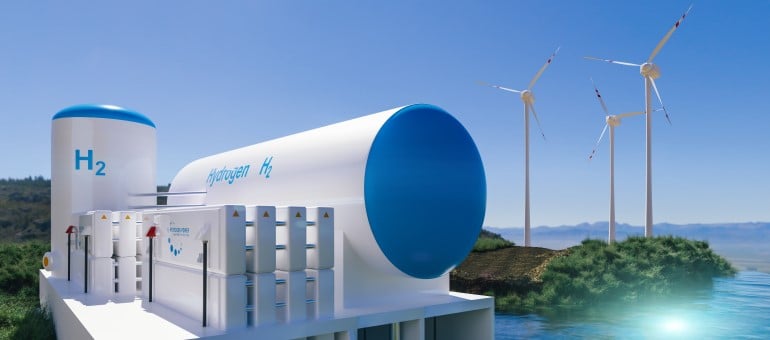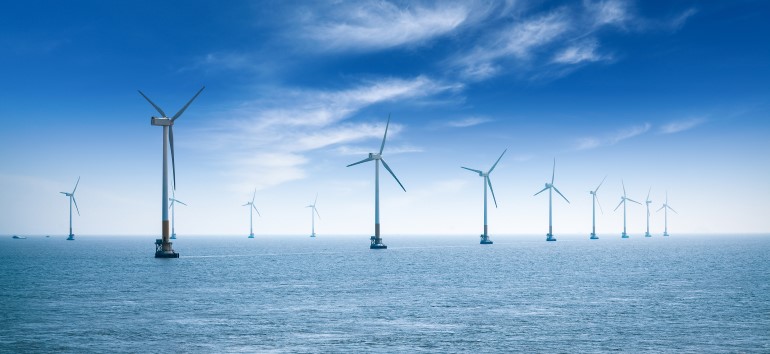Is this the hydrogen decade?
New opportunities for hydrogen production give reason for optimism.
New opportunities for hydrogen production give reason for optimism.
Even in this decade, we can see significant growth in the use of renewable and low-carbon hydrogen. If things go as expected, hydrogen will play an important role in reaching global emission targets.
“In a few years, the production of renewable hydrogen is expected to be competitive with that of fossil fuel in the most windy and sunny locations. Access to inexpensive electricity is what is now making green hydrogen production via electrolysis cheaper. Carbon capture can also make fossil ‘grey’ hydrogen into ‘blue’ hydrogen with low emissions,” says Magnus Killingland.
Killingland is the Segment Lead for hydrogen and carbon capture and storage (H2&CCS) in Northern Europe in DNV, a company with the objective of safeguarding life, property and the environment.
Hydrogen is used to process fuel and chemicals to make products we use every day.
Hydrogen combustion only emits water vapour, so it is the production emissions that determine whether hydrogen is sustainable and has low emissions.
Hydrogen is the most abundant chemical element in the universe and can be produced from fresh water, or from salt water to preserve fresh-water resources.
The challenge is that the current production of hydrogen from natural gas emits 10kg CO2 per kg hydrogen. In comparison, renewable hydrogen can emit less than 1kg CO2 per kg hydrogen for the entire value chain.
Killingland says that renewable and low-carbon hydrogen has long been an unrealistic alternative as an energy carrier and fuel. This is because low-emission hydrogen has been unable to compete with low-cost fossil energy that has no emission costs – but this is no longer the case.
The massive increase in the number of wind and solar power plants will in time result in low electricity costs. Combined with the reduction in the cost of electrolysis equipment, this positions green hydrogen as a real competitor to other hydrogen colours. This is especially true in those sectors that have to pay a carbon price on their emissions, such as heavy industry and some parts of the transport industry.

DNV’s o“Norway is very advanced in the development of low-emission transport using electric cars, ships and now also hydrogen ferries. The large car makers have started the process, and energy companies are developing solutions to reach their own, national and global emission goals,” says Killingland.
Large ships need a ‘hydrogen carrier’, such as ammonia, in order to have enough energy for long voyages.
When heavy vehicles are to travel over long distances, hydrogen combined with a battery can allow them to achieve the range required. The difficulty is to build charging and filling stations. Here, DNV is also helping Norwegian and European companies and authorities by proposing solutions.
There are also a lot of developments in Norway’s airline industry – as regards both hydrogen as a fuel component and engines that run on hydrogen. DNV is collaborating with the Norwegian airline industry to identify possible roadmaps for sustainable air traffic.
bjective has been the same since 1864: to safeguard life, property and the environment. Today, this objective is relevant in a large number of industries, and when looking at hydrogen’s place in the future.
Killingland and DNV are taking part in several hydrogen projects in Norway, the Nordic region and Europe, and are also analysing future opportunities to produce hydrogen in a longer perspective – to see how quickly costs can be reduced and volumes can be increased. The perspective is up to 2050, but Killingland is confident there will be significant growth in the use of renewable and low-carbon hydrogen as early as in this decade.
“We’re now focusing on renewable and low-carbon hydrogen, as we have nuances of grey, green and blue hydrogen. These colours can produce both high and low emissions depending on the technology, energy and raw materials used,” says Killingland.
Almost 100 years ago, Norway was a world leader in green hydrogen - via electrolysis and renewable waterfall power. We can now recapture our position as a producer of pure hydrogen, following a detour via very dirty hydrogen. Hydrogen can be green, blue, turquoise, grey or brown – all the colours,” says Magnus Killingland.

“Renewable energy and emission-free manufacturing and transport will be crucial on the journey towards reaching several of the UN’s sustainable development goals. However, technology alone can’t create a greener world. Legislation also plays an important role – for example licences to store CO2 under the seabed and laws governing the management of offshore wind resources,” Killingland points out.
This is why Magnus Killingland is working with many professional disciplines in DNV. The teams include people who deal with regulatory issues, technology, safety and finances.
“We look for those who can create good, innovative systems,” he says.
“People who understand technology, finance, safety and the environment, and can see the big picture to ensure sustainable development. That creates a safer, smarter and greener world.”